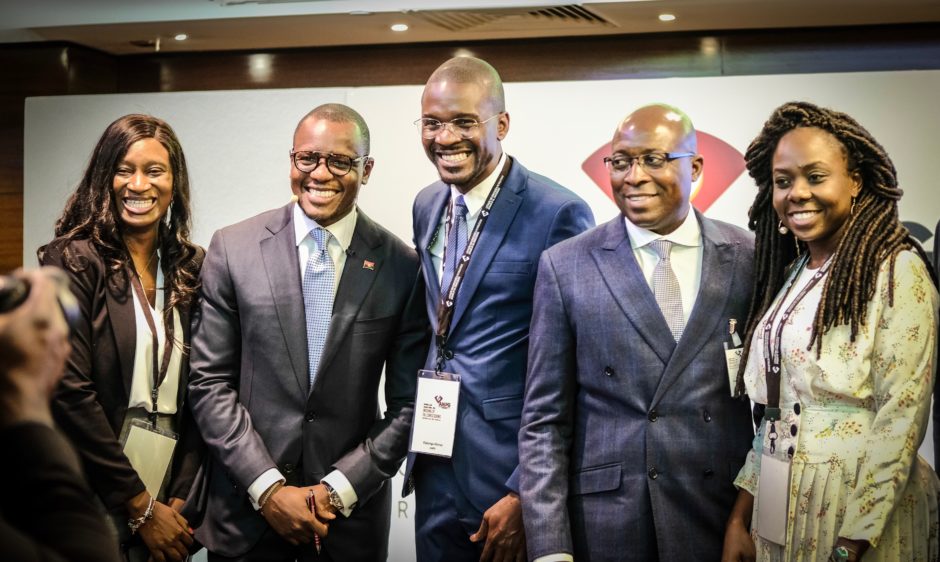
Angola’s new regulator held its London roadshow on September 17, touting the new opportunities in its Namibe and Benguela basins.
While the room was packed, and attendees showed interest, the Agência Nacional do Petróleo, Gás Natural e Biocombustíveis (ANPG) faces an uphill struggle in securing the big-ticket investors it requires to make progress in these frontier deepwater areas.
The country is a victim of its own history. The 2011 invitation-only bid round was wildly successful – in terms of securing investment and signature bonuses. The hundreds of millions of dollars spent on this did not translate into exploration success, though, with a string of disappointing well results and no commercial finds. Rigs were contracted at peak day rates and for extended periods of time, a necessity given the perception of scarcity at the time.
This Kwanza Basin-focused round was intended to give Angola its next phase of oil production, but this failed to occur and further work was cut short by the oil price crash.
The failure of the Kwanza round has driven Angola’s current production decline. In 2018, output was 1.53 million barrels per day, down 8.5% on the previous year, according to BP’s statistics. Declines are driven by the deepwater fields where there has been a shortfall in major new exploration plans. There have been some recent project approvals for new wells on existing floating production, storage and offloading (FPSO) units, from the European majors. But these are insufficient to stem the decline tide.
The Angolan government has been keen to tackle this problem, which accounts for around one third of GDP and more than 90% of exports. As such, it has carried out aggressive reforms of the oil sector, improving the attractiveness of the fiscal regime and splitting off the regulator, ANPG, from Sonangol early this year as concessionaire.
Giving power to ANPG in this way is also seen as an important step forward in improving corporate oversight and transparency in the country, which has been seen as prone to corruption. Angolan President Joao Lourenco came to power in 2017 and has been seen as a keen reformer. When he was elected to the presidency he was expected to be a defender of the legacy of his predecessor, Jose Eduardo dos Santos.
On offer
The licence round officially starts on October 2. It covers 10 blocks, of which nine are in the Namibe Basin and the last, Block 10, in the Benguela Basin. The round will be carried out under the Petroleum Activities Law of 2004, with amendments from April this year. The Presidential Decree 86/18, on public tenders, is also relevant.
Proposals will be opened in November, contracts negotiated from January to March 2020 and signed in April.
This will be followed by further bid rounds. From 2020 to 2025, blocks in the Congo and Kwanza basins will be offered. A number of blocks – in the Kwanza, Namibe and Congo basins – are also available for direct negotiations.
The majority of Angola’s fields are in the Congo Basin, clustered around the north of the country and its exclave of Cabinda.
Namibe
PGS is providing MultiClient GeoStreamer 3D data for the round. The company has said it has 3D coverage of Blocks 27, 28 and 29, while the other blocks in the round are covered by 2D data.
ION Geophysical has also recently announced work on Angola. The company has said it expects to begin its new 2D multi-client work immediately, with early results available for the licence round. ION drew comparisons between the Namibe Basin and offshore Brazil.
Schlumberger’s WesternGeco is also offering data on the blocks, with 19,500 km of 2D.
The Namibe Basin lies in the country’s south and is under explored. One company making an early move into the area – and one that the ANPG and the round’s organisers, IHS Markit, have been eager to highlight – is ExxonMobil.
The US super-major entered the Namibian side of the basin in a deal earlier this year, with Namcor. Exxon has also signed a memorandum of understanding (MoU) with Sonangol for three blocks in Angola’s Namibe Basin: Blocks 30, 44 and 45. The awarding of these blocks is expected to be concluded this year. Given that the US company has been one of very few companies to approve new deepwater FPSOs recently, with a number of developments taking shape in Guyana, this is clearly a positive.
The list of companies able and willing to work in such an area is small. While prices for operating in the deepwater have come down, given over capacity in the offshore market, it remains an expensive and high-risk business.
The majors have been stocking up with exploration acreage through the downturn, with a range of opportunities open to them around the world. While the blocks on offer in the Namibe Basin – and others – are sizeable, the cost of Angolan production is still relatively high, particularly for the installation of new facilities, rather than simply adding more wells to existing FPSOs.
The last leg of the roadshow is due to be held in Dubai on September 23.
